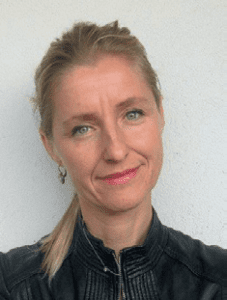The global supply chain has experienced unprecedented strain caused by the COVID-19 pandemic and the Russia-Ukraine conflict. Just as COVID-19-related challenges with labor shortages and transportation delays began to ease, the Russia-Ukraine conflict generated new problems for the global economy. For valve manufacturers, conflict zones, and trade sanctions caused exotic metal raw material shortages, significant increases in lead times from foundries, unpredictable production suspensions, price volatility, greater costs to re-route transportation, threats to natural gas distribution, and a material spike in energy prices.
By Tom King, Director Vendor Quality & Audits and Olga Malek, Senior Quality Manager – MRC Global
The list of challenges is exhausting, complicated, and interconnected. Valve customers, however, need solutions to keep their businesses moving forward, not excuses. It became more critical than ever for valve manufacturers and distributors to deftly navigate these market conditions and leverage long-standing relationships throughout their network of suppliers. End users need confidence that their needs will be met, which requires consistent engagement, transparency, problem-solving, and dependability. These factors are paramount for an effective customer-supplier relationship in all market cycles but especially in uncertain times.
To achieve this, staying on top of current news and events helps to proactively optimize the necessary channels of supply chain. Remaining abreast of evolving global economic conditions is vital. Constant, daily communication and engagement with suppliers is necessary to sort through these chaotic market conditions and make shifts at a moment’s notice. These circumstances reveal how important strategic relationships are with suppliers.
Impact on the Manufacturers
In the meantime, the situation for manufacturers and their raw material suppliers has, at times, been dire. At the outset of the Russia-Ukraine conflict, certain steel grades simply became unavailable in the European market. Forge masters could not quote or make offers. European forge masters and foundries had to help their local communities by moving to a single shift at night to conserve energy during peak hours. Once offers resumed, delivery terms and prices were valid for only a day or two. To seek sourcing stability, some suppliers looked to the Chinese forgings market but, as orders were placed, another COVID-19 wave hit Shanghai, making the transportation and custom clearance queues unpredictable.
Other European manufacturers considered the Indian forging market, but its lack of experience proved too big a concern to serve as a viable solution. This caused the industry to shift its traditional sourcing for products, components, and materials to new alternatives based on a manufacturer’s most pressing need, whether that was material availability, delivery time, or cost.
Manufacturers suffered further setbacks with raw material availability. In a matter of weeks, raw material delivery lead times tripled. This caused production amounts and variations to become common, resulting in partial orders shipping with dramatic gaps between order and receipt of goods. On the other hand, manufacturers who chose to hold orders until fulfilment was complete found their deliveries shipped extremely late. One lesson learned from this is that having an effective enterprise resource planning tool is one of the best ways to combat these situations. Reconciling partial orders received to order status when processing hundreds of orders simultaneously around the world can make or break manufacturer and distribution network.
These significant shifts to manufacturers’ usual sourcing and production processes naturally raises concerns around the quality of the products made under these conditions. Customers and their distributors must be vigilant to obtain products that meet their quality standards. With so many shifting gears impacting the valve manufacturing industry at once, one misplaced cog could spell unintended consequences to the end-user.

One lesson learned is that having an effective enterprise resource planning tool is one of the best ways to combat these situations. Reconciling partial orders received to order status when processing hundreds of orders simultaneously around the world can make or break manufacturer and distribution network.
Preserving Quality
As a result, to reduce the risk of these dynamic market changes, enhancing quality due diligence is key. Given the many production and material changes, additional quality checks should not be limited to visual inspections. Instead, reach deep into the quality tool bag by supplementing any combination of non-destructive evaluation and destructive testing deemed necessary to make certain that all parts of the product are within compliance. This additional inspection and testing may seem drastic, but it is minor compared to a product failure during use. While this system of higher-level testing and inspections is a best practice regardless of challenging times, it is especially important during challenging times. Product quality and reliability is critical.
Viable Solutions
Lastly, with imports, transportation continues to bottle neck at ports with ships waiting on the coast for days and weeks. Where possible, and to avoid these additional delays, suppliers should consider alternatives. One such alternative is to place a larger volume of products for shipment, rather than several smaller shipments to avoid multiple delays and reduce cost.
Another alternative is for international suppliers and a domestic supplier to work together to import parts and components but assemble and test domestically. This enables larger amounts of components to ship in place of larger completed products for a more efficient process.
A third alternative is to strategically plan and place product reserves in the countries of usage based on forecasting and demand. These reserves can be steadily accumulated over time and provide for stable product availability. In addition, working with a distributor to support warehousing can assist and provide opportunities for market expansion.
Suppliers could consider moving to a complete domestic sourcing operations as a viable option. While there may be additional costs, the increase may be worthwhile to ensure the product is available.
Continuous cost analysis between air, sea, train, and road transportation is critical since prices ebb and flow daily. These suggestions are just a few considerations to minimize the impact of global transportation disruptions.

“Suppliers may benefit from relying on distributors who actively monitor these types of market conditions and stock inventory to hedge against anticipated market disruptions. Ultimately, manufacturers can effectively rely on distributors to do most of the work to navigate the process.”
Final Thoughts
Combined, these challenges have caused a shift to increasing work at the procurement stage. Manufacturers and suppliers are conducting more research, sending more inquiries, and issuing more requests for quotes. Now, to hedge against delays, procurement departments are extending their standard lead time for requests for quotations and orders. In addition, suppliers may benefit from relying on distributors who actively monitor these types of market conditions and stock inventory to hedge against anticipated market disruptions. Ultimately, manufacturers can effectively rely on distributors to do most of the work to navigate the process. Overall, suppliers are best served learning from the past to make more effective decisions in the future.
The COVID-19 pandemic and the Russian-Ukraine conflict have caused great supply chain disruptions but, to a certain extent, spurred innovations and improvements. The shared experiences of manufacturers, sub-suppliers, and distributors resulted in valuable experience to better navigate the next wave of uncertainty.





